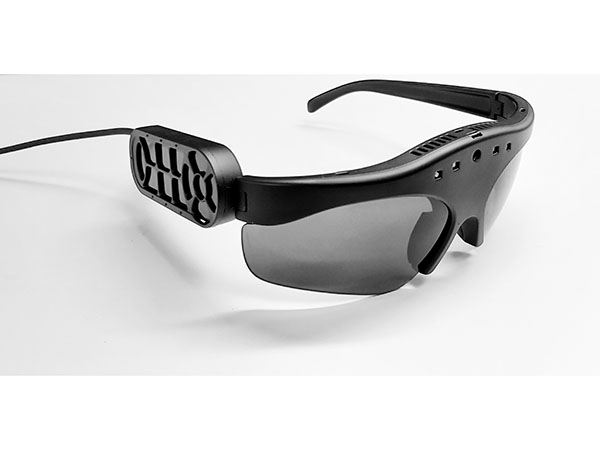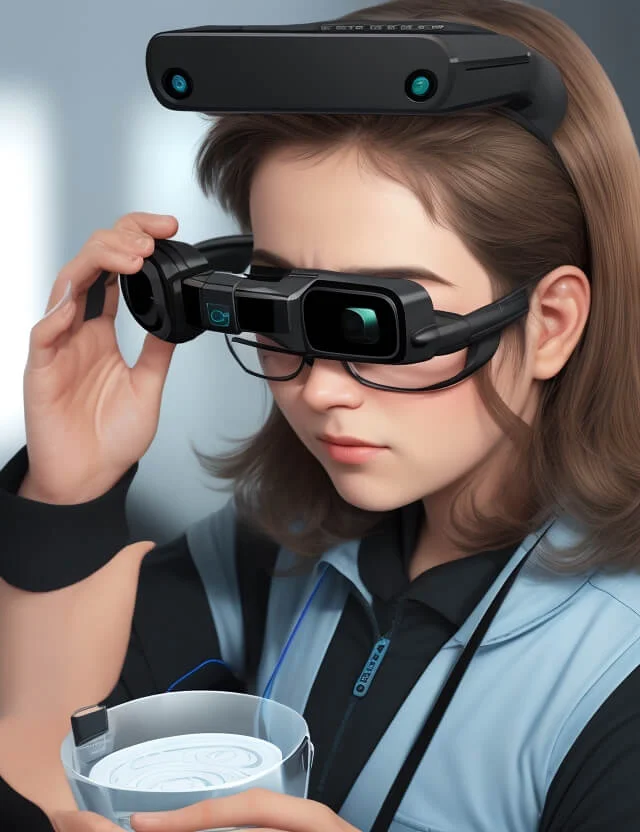OCR Devices for the Blind: Breaking Barriers with Optical Character Recognition
Empowering Freedom With Assistive Innovation for the Blind
The combination of assistive innovation for individuals who are visually damaged or blind stands for a substantial development in promoting freedom and improving lifestyle. With an array of tools-- from screen viewers to innovative tactile devices-- these modern technologies not just help with navigation and interaction yet likewise promote social incorporation and engagement in various aspects of life. As we check out the varied kinds of assistive gadgets and their real-world applications, it becomes clear that the impact is extensive. Yet, the evolution of this technology raises important concerns regarding availability and future developments that necessitate further exam. Assistive technology for the blind.
Recognizing Assistive Technology
Although assistive technology has actually developed significantly throughout the years, its basic objective remains the very same: to improve the lifestyle for individuals with specials needs, particularly those that are blind or aesthetically damaged. This innovation includes a wide variety of tools and gadgets that assist in freedom and performance in everyday activities.
Assistive innovation can be classified right into low-tech and state-of-the-art remedies, each created to satisfy certain demands. State-of-the-art tools often include software application applications, specialized equipment, and flexible devices that use sophisticated technology to supply support in different contexts. Alternatively, low-tech solutions may entail day-to-day products that are modified to enhance ease of access, such as magnifiers or tactile markers.
The integration of assistive modern technology right into the lives of individuals who are blind or visually hindered not just advertises autonomy but additionally fosters social incorporation and engagement in specialist and educational atmospheres. By leveraging these modern technologies, customers can browse their environments, access info, and interact efficiently, therefore enhancing their overall lifestyle. Recognizing assistive modern technology is important for professionals, caregivers, and advocates that aim to sustain people in maximizing their possible and attaining better independence.
Kinds Of Assistive Gadgets
Assistive devices for the blind and visually impaired are crucial devices that improve daily living by addressing details difficulties come across by individuals. These tools can be extensively categorized into 3 main kinds: optical gadgets, electronic tools, and sensory gadgets.

Sensory devices, such as Braille displays and tactile maps, supply alternative means to obtain information. Braille displays convert electronic message right into Braille, enabling customers to read through touch. Tactile maps offer spatial understanding via raised appearances and lines, permitting for far better environmental awareness.
Together, these assistive tools equip individuals with visual impairments to involve even more fully with their surroundings, advertising better freedom and confidence in everyday activities.

Effect On Life
The integration of assistive innovation right into the everyday lives of individuals that are visually damaged or blind dramatically boosts their capability to browse and interact with the globe around them. Devices such as display readers, Braille displays, and mobile applications promote access to details, permitting individuals to involve with electronic material, interact effectively, and take care of everyday jobs individually.
Furthermore, technologies like wise glasses and navigating apps supply real-time aid in strange environments, improving movement and self-confidence. These tools enable customers to recognize obstacles, reviewed indications, and also recognize faces, therefore fostering a feeling of autonomy in public rooms. Furthermore, home automation systems, which can be controlled via voice commands, permit people to manage their living atmospheres better, enhancing convenience and safety.
The influence of assistive technology prolongs beyond practical tasks; it promotes social incorporation and psychological health. By connecting the space between individuals and their environments, these technologies equip individuals to get involved totally in community activities, seek educational chances, and engage in significant relationships. Inevitably, the development of assistive technology contributes in redefining the opportunities for individuals that are blind or visually damaged, causing an extra easily accessible and comprehensive culture.
Success Stories and Testimonials

An additional effective endorsement comes from Mark, a current college grad that made use of screen reading software application throughout his scholastic trip. This modern technology enabled him to accessibility training course materials and take part in discussions, eventually causing his successful transition into the workforce. Mark credit scores assistive technology for empowering him to accomplish his profession goals, stressing its duty in leveling the having fun area for individuals with aesthetic problems.
Furthermore, neighborhood centers have actually reported boosted retina scanner participation in their programs many thanks to the intro of easily accessible digital platforms. These platforms have made it less complicated for individuals to connect, share resources, and assistance one another. These success stories collectively highlight the extensive result of assistive technology in fostering freedom, enhancing top quality of life, and damaging down barriers for the blind and visually impaired neighborhood.
Future Trends in Assistive Technology
Emerging modern technologies are positioned to transform the landscape of assistive technology for individuals who are aesthetically impaired or blind. Developments in expert system (AI) and equipment discovering are boosting the capabilities of devices, enabling even more user-friendly customer experiences. As an example, AI-driven applications are increasingly able to review and acknowledge things message out loud in real-time, supplying users with important info regarding their surroundings.
Furthermore, improvements in wearable innovation are producing brand-new chances for self-reliance. Smart glasses outfitted with augmented reality functions can overlay crucial info onto the customer's field of view, helping with navigating and communication with the environment. The combination of Web of Things (IoT) gadgets is improving access in smart homes, allowing users to control home appliances and receive notifications with voice commands or tactile user interfaces.
The advancement of braille displays and tactile comments systems is likewise growing, promoting accessibility to digital material and enhancing communication. As these technologies continue to progress, they assure to improve day-to-day living, academic possibilities, and employment leads for individuals with visual impairments. Constant partnership in between engineers, users, and advocacy groups will be essential in making sure these technologies meet the requirements of the neighborhood effectively.
Verdict
Finally, assistive modern technology plays a critical duty in enhancing the independence of individuals that are aesthetically impaired or blind. By offering vital tools and resources, these innovations facilitate improved communication, accessibility, and navigating to information, thereby promoting freedom and confidence. The transformative effect of assistive devices not only promotes reliable communication with the environment yet also urges social incorporation and engagement in different elements of life, eventually empowering customers to prosper within their communities.
The integration of assistive innovation for people that are blind or aesthetically damaged represents a significant improvement in promoting freedom and improving high quality of life.The combination of assistive modern technology right into the lives of individuals that are blind or visually hindered not just promotes get redirected here autonomy yet likewise promotes social inclusion and engagement in educational and expert environments. Ultimately, the development of assistive modern technology is critical in redefining the opportunities for people that are blind or aesthetically damaged, leading to a much more comprehensive and the eye care center easily accessible society.
Several individuals who are blind or aesthetically damaged have shared motivating success tales that highlight the transformative impact of assistive technology on their lives.In verdict, assistive technology plays an essential duty in improving the independence of people that are visually impaired or blind.